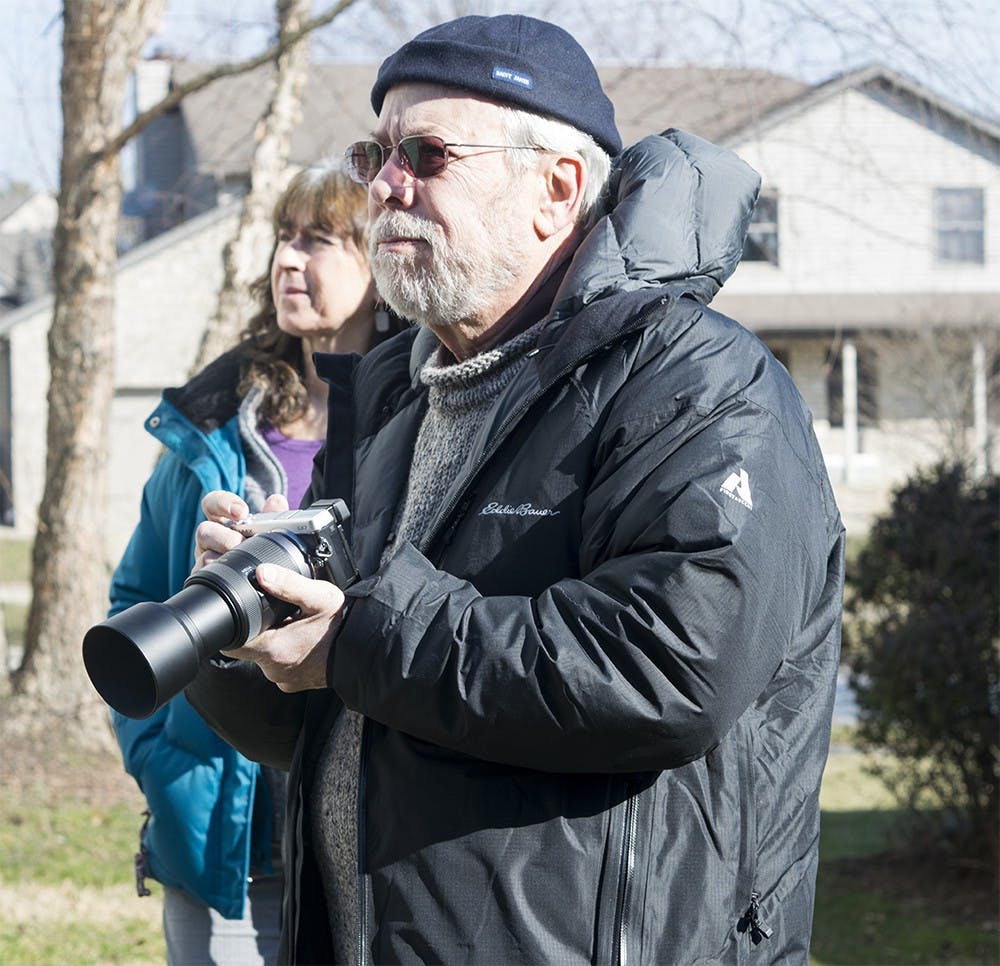Conrad, a burgeoning wildlife photographer and vice president of the Sassafras Audubon Society, brought four other members to his home Saturday morning for a lesson in bird photography.
Conrad spread a series of photographs across his dining room table in the mid-morning sunlight, a few feet away from the porch, where he shoots local wildlife, and feeders.
“I do not consider myself, by any means, an expert photographer,” Conrad said. “This is just stuff — some of it I like, some not as much — but it makes a point.”
There was a pause in the lesson as the group considered the appearance of a black and white woodpecker with a red patch at the back of its head, quickly identified as a male tufted downy.
For several members of SAS, which advocates for environmental conservation in Indiana, wildlife preservation overlaps with ornithology.
Conrad, a professor in IU’s anthropology department, keeps track of the species that turn up in his backyard.
He said he has seen 60 species turn up on the feeders or trees in the 21 years he’s been birdwatching in Bloomington.
“You get to know their behavior,” Conrad said. “You get to know that if there’s a red-bellied woodpecker on the feeder, there’s going to be a scuffle.”
For Conrad, understanding the birds’ habits has fed into capturing that behavior on film.
Conrad said wildlife photography is best when it rouses an emotion in the viewer, even if that reaction is “What’s going on here?”
He said the viewer will excuse “a lot of technical ills” if the bird appears to be doing something interesting.
For example, he held up a photo of a bluebird landing in a feeder.
In the photo, the bird’s leg is extended so that it appears to have kicked one of the dislodged peanuts.
“People will read human emotion and behaviors into animals,” Conrad said. “If the bird is doing something interesting, it’s a story.”
Not all of the anthropomorphism is funny, however. Conrad next held up a picture of a hulking Cooper’s Hawk picking apart a starling, feathers drifting down from the railing.
“If you’ve seen it, when the hawk is done, there’s nothing but feathers,” Conrad said. “That’s a sad story.”
Amber Smallwood, the electronic communications chair for SAS, said learning how to photograph birds would help her capture their image long enough to identify them.
Smallwood, 36, said she’s loved birds since she received a pair of parakeets at age 8 or 9 but didn’t know anyone else interested in birdwatching when she was in her 20s.
“One of the nice things about Bloomington is that it’s a pretty diverse place as far as interests go,” Smallwood said.
She met and began dating Tommy Grav, the president of SAS, then found out they shared the love of birds.
“I’m a social worker by trade, so it’s nice to have something relaxing,” Smallwood said.
Smallwood said she’d never used her DSLR before Saturday morning but hoped to put the lesson into practice at Indiana parks.
“I’m not really expecting anything other than the basics,” Smallwood said. “I can build on it later, maybe make it into a hobby.”
Conrad stationed the club members on his front porch and in the corners of his backyard, where the birds would likely gather.
Within minutes, shutter clicks punctuated the birdsong.
“Birds are tough subjects — they’re small, they move around quickly and unpredictably, they’re not the most cooperative,” Conrad said. “But you only need one good photo to make the whole day worthwhile, really.”






